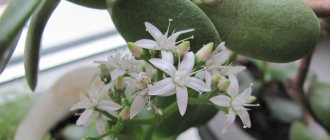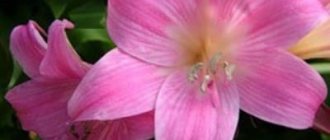Telegram
VK
Viber
Zephyranthes is a beautiful delicate plant of the Amaryllis family. The homeland of zephyranthes is considered to be Central and South America, where it is also called small hippeastrum.
Zephyranthes is a medium-sized decorative flower that blooms annually with a single bud. It is unpretentious, but with regular care it can delight for a long time with rapid reproduction and beautiful flowering.
With proper care, zephyranthes blooms 4-5 months a year, depending on the species, in autumn, spring or even winter. However, many gardeners are faced with a problem when zephyranthes does not bloom.
There are a number of reasons leading to the fact that zephyranthes do not bloom and do not delight their owners with exquisite flowers:
Origin and description of the species
Zephyranthes is a genus of perennial bulbous plants that belongs to the amaryllis family and has about 90 species, including hybrid varieties suitable for indoor and outdoor use. This amazing flower grows in wet places, swamps and peat bogs of tropical regions of Central and South America, Mexico, Argentina, Brazil, Paraguay and the West Indies. Local residents happily cultivate it in areas near their homes.
Zephyranthes has several “folk” names: upstart, west wind flower, rain lily. The thing is that as soon as the rainy season begins, the previously dormant zephyranthes suddenly suddenly releases arrows topped with flowers similar to lilies, which bloom literally before our eyes. Flowering of the upstart begins unexpectedly and lasts very briefly - on average, 2 days. The plant received its official name, which literally translates as Zephyr flower, due to the fact that its growing and flowering period occurs during the appearance of the western winds (Zephyr is the god of the warm western breeze).
Zephyranthes flowers are crocus-shaped, wide open, with stamens of equal length. The color of the petals can be different - from white to purple. Zephyranthes look best in a group consisting of a large number of planted bulbs. During times of drought, plants are dormant, without leaves or shoots.
Zephyranthes has a “brother” - gabranthus, which is also called the Argentine rain lily. How not to get confused?
The zephyranthes peduncle is always crowned with only one erect flower
Table: differences between zephyranthes and gabranthus
| Zephyranthes | Gabranthus |
| Flowers open wide | Lily flowers, petals form a tube at the base |
| Flowers erect | Flowers are inclined to the stem at an angle |
| Stamens are all the same length | Stamen filaments of different lengths |
| Seeds flattened, wingless | Seeds thickened, slightly winged |
| There is one flower on the arrow | One peduncle can be crowned with up to four flowers |
The peduncle of gabranthus can be decorated with from one to four flowers inclined towards the stem
Gabranthus first belonged to the genus Zephyranthes, but since there are enough differences between these plants, it was separated into a separate genus. Zephyranthes and gabranthus belong to the amaryllis family.
Zephyranthes diseases and other misfortunes
In the process of growing marshmallows, you may encounter a number of problems:
- lack of budding and flowering due to hypothermia, lack of moisture and/or fertilizers;
- bulb rot due to excess moisture and hypothermia;
- fungal diseases;
- invasion of pests - spider mites, whiteflies, scale insects, amaryllis scale insects (here treatment with insecticides is required).
Important information! Zephyranthes most often dies from excessive watering or excessively dry air. To prevent rotting of the bulbs, the substrate must be poured with boiling water and potassium permanganate before transplanting the bulbs, and then dried.
Why do the leaves of zephyranthes turn yellow?
Sometimes, even if planting a marshmallow bulb was successful, over time its leaves may turn yellow, and here’s why:
- not enough moisture - you need to increase the frequency of watering;
- there is little sunlight - lamps with artificial lighting should be installed;
- lack of nutrients - it is necessary to fertilize with a high nitrogen content.
In fact, this is a common problem with exotic plants. You just need to use the above recommendations and thus you will be able to minimize the risk of their occurrence.
Caring for zephyranthes is not difficult, because this plant needs basic care. It is important to take into account all its features as an exotic plant and provide all the necessary conditions for healthy development and abundant flowering.
Varieties
Based on the color of the flowers, there are 4 types:
- White-flowered. The bulb is 2–3 cm in diameter, the leaves are narrow, the flowers are white, about 6 cm in diameter. Feels good in cool rooms. Blooms in May-September.
- Yellow-flowered. The bulb is 3 cm in diameter, the flowers are funnel-shaped, yellow. Grows well in open ground in the Central and Central Black Earth regions. It blooms in December-January on the windowsill, in May - in open ground.
- Red-flowered. The flower is 8 cm in diameter, the bulb is 3 cm in size. It blooms in April-July.
- Two-color. The bulb is elongated, 3 cm, with a dark outer film. The flowers are usually white, with a reddish-green exterior. Blooms in January. Suitable for moderately warm rooms.
Zephyranthes is successfully cultivated in our country both indoors and in the garden. It grows outdoors in subtropical regions of Russia, namely in the Krasnodar Territory. The plant is unpretentious, develops well, requires minimal care. Any novice gardener can handle growing it.
At home, all types of marshmallows grow equally well, but on windowsills you can most often see the popular indoor varieties described below.
Snow-white zephyranthes (Zephyranthes candida) . Belongs to the white-flowered group. The bulb reaches a size of 3 cm. The leaves of snow-white zephyranthes appear along with the peduncle. Its flowering period is from July to October. Great for cool to moderately warm temperatures (22-25°C).
Golden zephyranthes (Zephyranthes aurea) . This plant belongs to the yellow-flowered group. Its bulb is round, the yellow flowers are funnel-shaped at the base, then expand. Blooms from December to January. Zephyranthes golden is very popular for planting in open ground in areas with warm climates. He is a welcome guest on our windowsills.
Pink zephyranthes, or pink (Zephyranthes rosea) . One of the most popular varieties. It is a red-flowered species and has very bright purple-pink flowers.
Zephyranthes robusta . Its name speaks for itself. The bulb reaches 4 cm. The flowers are large, the length of their light pink petals can reach 7 cm. It blooms in April - July. The dormant period is pronounced and runs from September to November. Red-flowered group.
Zephyranthes versicolor . Zephyranthes versicolor belongs to the group of bicolors. The bulb is 3 cm in diameter and has a dark outer film. The flowers are reddish on the outside and creamy white on the inside. The length of the petals is 5–6 cm. It blooms in January.
Of course, there are many more varieties of marshmallows: of the 90 existing in nature, about 10 are grown at home.
Photo gallery: zephyranthes white, pink, powerful and other popular varieties
Golden Zephyranthes belongs to the group of yellow-flowered plants.
Zephyranthes pink belongs to the red-flowered group
Zephyranthes versicolor belongs to the group of bicolor
Zephyranthes snow-white belongs to the white-flowered group
Zephyranthes atamascus begins to bloom in March-April
Zephyranthes Anderson is popular among gardeners
Zephyranthes keeled blooms in April
Zephyranthes Fostera is native to Mexico.
Zephyranthes Lindley has pink funnel-shaped flowers.
Zephyranthes Traub's flowers look like a white pointed star
Zephyranthes Drummond flowers have bicolor petals: pink on the outside, white on the inside.
Zephyranthes blooms with light pink flowers
Zephyranthes (upstart)
Zephyranthes is a perennial bulbous flowering plant, popularly called “upstart”.
Interesting! This exotic flower is unique in that it shoots out a peduncle very quickly and is in a hurry to bloom literally the next day. In nature, zephyranthes (upstart) develops in high humidity, so it prefers to grow in the tropics.
Marshmallow flower
The leaves of the plant are long and narrow, the plant looks compact. The flowers resemble stars and bloom on thin, graceful stalks. Based on the color of the petals, 4 types of crops are distinguished: white-flowered, red-flowered, yellow-flowered and two-colored. The upstart flowers do not delight with their appearance for long, a maximum of a week, and then fall off.
Medicinal properties of the plant
The exotic plant is rich in various organic substances. It is often used in medicine: tinctures are made from the leaves to treat colds, liver diseases, diabetes, tuberculosis, and joint diseases.
Care
Watering and fertilizing
Watering zephyranthes must be done regularly as soon as the top layer of soil dries. You should not allow water to stagnate in the bowl, otherwise the root system may rot and the flower itself may become sick. After flowering, zephyranthes are watered only after the earthen clod has dried. When the leaves wilt, stop watering.
In very dry and hot weather, the plant can be sprayed with a spray bottle.
Zephyranthes are fed once every two weeks with liquid fertilizers for flowering bulbous plants or universal complexes in the dosage specified by the manufacturer. Feeding begins at the moment when the first leaves appear and continues until they wither, so that the bulb can gain strength.
During the dormant period, the plant is not fertilized.
Flowering period
When exactly the zephyranthes blooms depends on many conditions:
- varieties;
- individual characteristics of the flower;
- external conditions;
- duration of the rest period.
Some species release arrows along with the appearance of leaves, others - after. But each peduncle is always crowned with only one flower. Zephyranthes blooms for no more than two days. Several arrows can be hidden in one bulb, so the impression of continuous flowering is created.
Marshmallow blooms look amazing, but only last two days
After the zephyranthes has faded, the peduncle needs to be trimmed, leaving only 5–7 cm. When it dries, carefully unscrew it.
Dead parts of the plant should be removed in a timely manner so as not to leave material for the development of infections.
Why zephyranthes does not bloom and how to make it bloom
It happens that the upstart is dormant and does not intend to release flower stalks. What could be the reasons for this?
- Spacious pot: when there is a lot of space, the bulb “fattens”, so it is necessary to transplant it into a tighter pot and not rush to free the plant from its daughter bulbs. Many gardeners do not replant zephyranthes for five years.
- Incorrect location of zephyranthes. If a flower is exposed to the rays of the scorching sun all day or is always immersed in the shade, it will not bloom.
- High humidity during the dormant period: the plant “in hibernation” does not need it at all.
- The flower is “fed” with fertilizers: the more, the better - this opinion is wrong, everything should be in moderation.
- The bulb is too deep: planting rules are written above.
Video: zephyranthes blooming
Rest period
The dormant period for zephyranthes usually falls on September-November or December-February. When the leaves begin to wither and fall off, watering should be stopped. Place the pot with the bulbs in a cool (12–14 °C), dark place with low humidity for 3 months. It is recommended to cut off dried leaves to avoid infection of the flower.
It is not necessary to remove dormant bulbs from the pot.
Table: optimal home conditions
| Conditions | Rest period | Period of active growth | Bloom |
| Temperature | 12–14 °C | 25–29 °C | 25–29 °C |
| Humidity | 40% | 80% | 80% |
| Watering | Not needed | Water regularly, after the top layer of soil dries. | It will bloom faster if you skip a couple of waterings. During flowering, water abundantly, do not allow water to stagnate, and do not wait for the soil to dry out. |
| Lighting | dark place | A bright place without direct sunlight. South, south-east or south-west window sill. | |
| Top dressing | No feeding | Once every two weeks, fertilize with liquid fertilizer according to the instructions. | Once every 10 days, fertilize with liquid fertilizer. |
Insect pests, methods of controlling them
Zephyranthes flowers are rarely bothered by parasites. If not properly cared for, some insects cause harm to the upstart. The plant itself will signal their appearance.
The main pests of zephyranthes
| Insect | Signs of an invasion | Measures |
| Amaryllis scale | It feeds on the juice of the flower, as a result of which the leaves begin to turn yellow, wither and fall off. | The plant is treated with an insecticide. If the bulb is severely damaged, it is destroyed |
| Whitefly | A whitish small moth is clearly visible on the underside of the plate. Signs of harm are not immediately apparent | Spray with chemical, then take out into a cool room. Due to its dislike of low temperatures, the pest itself will leave the plant |
| False shield | A convex insect measuring 4 mm in size immediately catches your eye | Begin with mechanical removal, wiping the foliage with a soap solution. Treat a window, window sill, flower pot. Then the upstart is sprayed with insecticide |
| Spider mite | The appearance of a sucking insect will be indicated by fading leaves and cobwebs on the plant. | The affected flower is treated with a chemical |
Spider mite on a plant
To avoid insect invasion, optimal humidity and temperature conditions are maintained in the room. The insecticide is also used for preventive purposes, without waiting for pests to appear.
Solving growing problems
Table: common mistakes in care
| Error | Consequences | Recommendations |
| Excessive watering | Rotting of the bulb and roots | Water after the top layer of soil dries out |
| Insufficient watering | Wilting or yellowing of leaves, no flower stalks | Do not allow the earthen coma to dry out |
| Bowl too big | No flowering | It is necessary to create moderate crowding for the plant |
| Peace is not guaranteed | For three months in autumn or winter, the flower definitely needs rest. | |
| The neck of the bulb is covered with earth | Follow landing rules |
Table: diseases and pests of zephyranthes
| Name | Description | Methods of control and prevention |
| Amaryllis mealybug | A small insect that causes yellowing, falling, and wilting of leaves. |
|
| Spider mite | A small insect that entangles leaves and stems in a web, causing the leaves to dry out and the plant to die. |
|
| Soft scale insect | A convex insect 4 mm long, feeds on the juices of the plant, causing its death. It is difficult to fight it with insecticides, since the scale insect has protection - a shield on its back. |
|
| Whitefly | A small white insect, 3 mm in size, similar to a moth. The whitefly comes from tropical countries, so it loves places where it is warm and humid. They live mainly on the underside of leaves. |
|
| Fusarium (red rot) | This dangerous disease is caused by a fungus that penetrates through wounds and cracks in the bulb. It manifests itself as rotting of the roots of the bulb, yellowing and wilting of the leaves. |
|
Photo gallery: diseases and pests that can affect zephyranthes
Spider mites appear when the air in the room is too dry
The amaryllis mealybug lives on bulbous scales
Whitefly appears in humid, warm climates
False scale insects are capable of very rapid reproduction
Fusarium is a dangerous fungal disease that causes rotting of the bulb and roots
Due to the fact that marshmallow bulbs are poisonous, the plant is quite resistant to disease and often dies due to improper care. In rare cases, zephyranthes can become ill with fusarium.
Why doesn't zephyranthes bloom at home?
Lack of flowering is most often caused by mistakes in caring for the flower.
Recommendation! In order to get upstart flowering at home, you must fulfill the following requirements:
- In the container where the zephyranthes is planted, there must be at least 7-9 bulbs , that is, the flower must be provided with close growing conditions;
- In winter, provide several months of rest, with low temperatures;
- In summer, be sure to fertilize the substrate .
Reproduction
Planting seeds
Seeds can be purchased at the store or raised yourself.
It is better to sow marshmallow seeds immediately after collection.
- Removal of seeds. To do this, you need to pollinate the flower. At the time when the pistil blades open, pollen from the stamens of the same or another marshmallow should be transferred to the pistil with a disinfected brush made of natural materials, and then cover the flower with gauze.
After ripening, it is advisable to sow the seeds immediately - their germination rate at this moment is almost 100%. The longer the seeds lie, the lower the germination rate.
- Substrate preparation. The soil mixture is the same as for bulbs, plus 1 more part of peat.
- Sowing seeds. Bury them into the soil 1 cm at a distance of 2–3 cm from each other, cover them with a plastic bag or glass, and put them in a warm place. Shoots will appear in about 20–25 days.
- After the emergence of seedlings, remove the shelter, move it to the brightest place with a temperature of 24–25 ° C, avoid direct sunlight.
- When the bulbs grow, in the spring they can be planted or transplanted into another bowl.
Zephyranthes grown from seeds will bloom only in the third or fourth year after germination.
Separate the daughter bulbs
Zephyranthes bulbs reach sizes of 3 cm, rarely 4 cm
This is the simplest and most common method among both beginners and experienced gardeners. When transplanting zephyranthes in the spring after a dormant period, you can see many daughter bulbs, which should be separated from the mother bulb, provided that these children have their own formed root system. Try to separate carefully, without disturbing the integrity of the bulbs and roots. Care and soil are the same as for an adult plant.
You can plant 10 bulbs in one bowl. Such seedlings bloom the next year.
Planting and transplanting
Planting and replanting zephyranthes is best done in the spring, after a dormant period. The bulbs must be pre-treated: freed from dead scales, removed rotten or dry roots, placed in a fungicide, for example Fitosporin, for half an hour.
- The container for this plant should be wide but shallow. As a rule, several bulbs are planted in one bowl.
- The soil should be loose and nutritious, and the pH should not exceed 6. When preparing the substrate, it is best to mix turf soil, sand and humus in equal parts.
- Place drainage at the bottom of the pot. The drainage layer should be at least two centimeters.
Fine expanded clay, brick chips, polystyrene foam are suitable for this purpose, and eggshells will be appropriate if the soil pH is below 5.
Drainage is a mandatory content of a bowl for planting marshmallows
Marshmallow bulbs are usually planted in groups
Zephyranthes bulbs go deep into the ground up to their necks
There is no need to replant store-bought marshmallows if its bulbs have not yet occupied all the free space.
Watering and fertilizing
Watering zephyranthes must be done regularly as soon as the top layer of soil dries. You should not allow water to stagnate in the bowl, otherwise the root system may rot and the flower itself may become sick. After flowering, zephyranthes are watered only after the earthen clod has dried. When the leaves wilt, stop watering.
In very dry and hot weather, the plant can be sprayed with a spray bottle.
Zephyranthes are fed once every two weeks with liquid fertilizers for flowering bulbous plants or universal complexes in the dosage specified by the manufacturer. Feeding begins at the moment when the first leaves appear and continues until they wither, so that the bulb can gain strength.
During the dormant period, the plant is not fertilized.
Flowering period
When exactly the zephyranthes blooms depends on many conditions:
- varieties;
- individual characteristics of the flower;
- external conditions;
- duration of the rest period.
Reviews
The plant is not capricious, it only requires watering, you need to water it moderately once a week or a little twice a week. Maintenance is, in principle, not difficult; the most that is needed is to remove the yellowed stems and periodically loosen the soil. I replant it twice a year, in autumn and spring, next spring I will divide the bush, since it has grown very much. It blooms beautifully, I like it very much, such cute bells, the color is delicate, white, and the flowers themselves are very delicate, it’s a pity that they just fade quickly, they bloom for a maximum of two days, but new flowers appear every day, so it’s not a problem, and always You can save this beauty in the photo.
MaryaHr88 https://citykey.net/review/ochen-nezhnye-i-krasivye-tsvetochki-u-nego
White zephyranthes produces a lot of flowers, I threw them away one after another, the flowers are large, delicate, but it’s a pity that they fade quickly. There is absolutely no fuss with it, the main thing is to replant and seat it on time.
maryahramlyuk https://otzyvy.pro/reviews/otzyvy-komnatnoe-rastenie-zefirantes-25580.html
Between flowering periods, Zephyranthes Lindleya looks completely unremarkable: narrow long leaves and nothing more. As soon as it starts to bloom, you can’t take your eyes off the plant. It is easy to care for. The plant reproduces by bulbs.
Natatka https://ru.badgood.info/reviews/content/_1074
How to make indoor flowers bloom
I would like indoor plants to delight us with their flowering at any time of the year. Is it possible to make indoor flowers bloom without harming the plants themselves?
How to water indoor plants for flowering
Remember the main rules on how to feed plants:
- Start fertilizing in March and continue during the flowering period. For winter bloomers, you can do this from December to February.
- First, moisten the soil and only then add mineral fertilizers. If they are dry, simply spread them over the ground, loosen it a little, and then water it.
- Apply fertilizer away from the roots.
- It is not at all necessary to buy fertilizers in the store; many people prefer to make do with improvised means: tea leaves, eggshells, coffee grounds, onion peel decoction, dried banana peel powder, aloe juice.
A trick to make flowers bloom magnificently and for a long time
The simplest little trick is to make the flowers in the house bloom magnificently and use universal fertilizer for a long time. The recipe for universal feeding is water with the addition of castor oil. It contains useful elements that will make your flower more resilient and stronger. It should be applied during the period when the first flower ovaries appear. With this little trick, the flowers in your house will bloom magnificently and for a long time.











